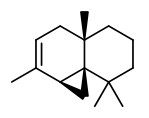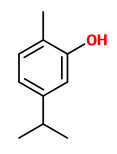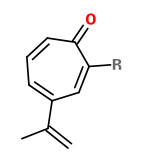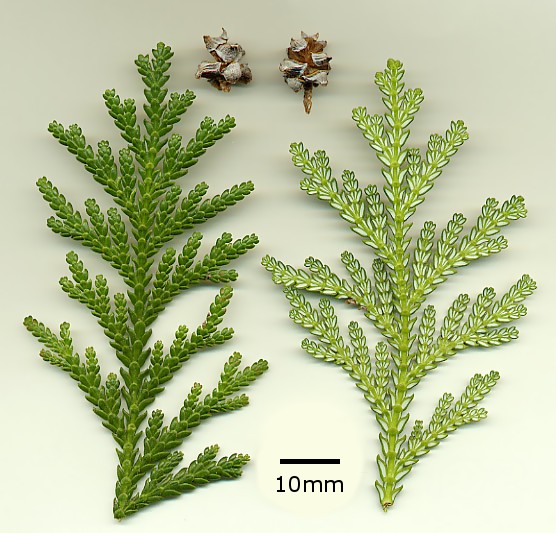Thujopsis dolabrata (Thunb. ex L. f.) Siebold & Zucc. - Cupressaceae - hiba, hiba arbor-vitae, asunaro, Hiba-Lebensbaum
Evergreen tree, up to 15m tall, native to Japan, cultivated as ornamental; crown pyramidal; branches ascending; bark thin, gray to reddish brown, peeling off in long strips; leaves scale-like, deep green and glossy adaxially, with a white stomatal band abaxially. http://www.efloras.org/florataxon.aspx?flora_id=2&taxon_id=200005460
„Thujopsis dolabrata is monoecious, with seed cones and pollen cones occurring on the same plant. Both types of cones grow terminal on branches, and do not exceed a few centimeters in length… Thujopsis dolabrata is used mainly for ornamental purposes. In Japan, it was once considered a sacred tree. Today, Thujopsis dolabrata can still be found as a decorative tree adorning the gardens of Japanese temples.“ http://blogs.ubc.ca/conifersubc/?page_id=125
„Thujopsis dolabrata differs from Incense Cedar and Red Cedar as it has wider flatter branches and visible stomata. Cone shape is also quite variable, tending to be globular more than flask-like. Like other cedars and Cedrus, the bark is shreddy and scented.“ http://www.sfbotanicalgarden.org/garden/bloom_09_01.shtml
„The steam distillate of the Thujopsis sawdust was shown to have potent antignawing activity. Three terpenoid compounds with antignawing activity were isolated from the steam distillate of the Thujopsis sawdust: thujopsene, carvacrol, and β-thujaplicine. Carvacrol exhibited the most potent repellent activity. As a naturally occurring repellent, carvacrol could be useful as new preventive agent against various kinds of damage caused by rodents.“
[Antignawing factor of crude oil derived from Thujopsis dolabrata S. et Z. var. hondai sawdust against mice., Ahn, Y.J., Lee, S.B., Okubo, T., Kim, M., Journal of chemical ecology, 21(3), 1995, 263-271]
 thujopsene |  carvacrol |  hinokitiol (β-thujaplicin, R=OH); β-dolabrin (R=OMe) |
„γ-Thujaplicin, β-dolabrin and hinokitiol (β-thujaplicin), hinokitiol-related compounds isolated from the wood of Thujopsis dolabrata S. and Z. hondai MAK have antimicrobial activity. In particular, strong antibacterial activity of hinokitiol and β-dolabrin on Staphylococcus epidermidis IFO-12993 was found, with a minimum inhibitory concentration (MIC) of 0.2 μg/ml. This activity was higher than that of gentamicin, used as a positive control, and so the strong antibacterial activity of both compounds on this bacterium is of considerable interest. Of the three compounds, γ-thujaplicin showed the strongest antifungal activity and its MIC was found to be around 1.5 μg/ml. The three compounds also inhibited metalloproteases.“
[Antimicrobial activity and metalloprotease inhibition of hinokitiol-related compounds, the constituents of Thujopsis dolabrata S. and Z. hondai MAK., Inamori, Y., Shinohara, S., Tsujibo, H., Okabe, T., Morita, Y., Sakagami, Y., Ishida, N., Biological and Pharmaceutical Bulletin, 22(9), 1999, 990-993]
„The effect of volatile matter from various wood chips on house dust mites and their influence on human comfort were measured… Among softwoods, volatile matter from Chamaecyparis obtusa and Thujopsis dolabrata var.hondai chips suppressed the activity of the mites highly and made the subjects feel refreshed and unexcited.“
[Effect of volatile matter from wood chips on the activity of house dust mites and on the sensory evaluation of humans., Hiramatsu, Y., Miyazaki, Y., Journal of wood science, 47(1), 2001, 13-17]
„4-Acetyltropolone, a minor component of Thujopsis dolabrata S. et Z. hondai MAKINO, showed antimicrobial activity against various microorganisms including wood-rotting fungi, a phytogrowth-inhibitory effect
with chlorophyll biosynthesis inhibition, cytotoxic effect and inhibitory activity on metalloproteases… The acute toxicity of 4-acetyltropolone (LD50: 335.2 mg/kg) to mice was much lower than that of hinokitiol (LD50: 191 mg/kg)… 4-Acetyltropolone, like hinokitiol (β-thujaplicin), β-dolabrin, γ-thujaplicin and α-thujaplicin, is known to be a component of Thujopsis dolabrata… This compound is nothing more than a compound with the acetyl group, instead of the isopropyl group, at the 4-position of hinokitiol. Hinokitiol, the major component (1.0%) of this plant, has already been found to show the antimicrobial activity, inhibitory activity on metalloproteases or catechol-O-methyltransferase, insecticidal activity, cytotoxic effect on mammalian tumor cells and phytogrowth-inhibitory activity. We previously reported that β-dolabrin and γ-thujaplicin, like hinokitiol, had a phytogrowth-inhibitory effect, inhibited metalloproteases, and had an antimicrobial activity and a cytotoxic effect on mammalian tumor cell lines. It has been reported that three compounds showed insecticidal activity against Tyrophagus putrescentiae and Coptotermes formosanus and antifungal activity on wood-rotting fungi. α-Thujaplicin, another minor component of the plant, exhibited the antibacterial activity, phytogrowth-inhibitory effect, metalloprotease inhibition and cytotoxic effect on mammalian tumor cell lines.“
[Biological Activity of 4-Acetyltropolone, the Minor Component of Thujopsis dolabrata SIEB. et ZUCC. hondai MAK., Morita, Y., Matsumura, E., Tsujibo, H., Yasuda, M., Okabe, T., Sakagami, Y., Inamori, Y., Biological and Pharmaceutical Bulletin, 25(8), 2002, 981-985] http://bpb.pharm.or.jp/bpb/200208/b08_0981.pdf
Hinokitiol (β-thujaplicin) „…can restore site- and direction-selective iron transport in different cells deficient in three distinct iron-transport proteins, and the same compound can promote dietary gut iron absorption or peripheral hemoglobinization in corresponding animal models. Mechanistic studies support the role of transmembrane ion gradients that build up in the setting of missing iron transporters, enabling hinokitiol to restore site- and direction-selective transmembrane iron transport. Further, endogenous protein-based homeostatic mechanisms interface with this imperfect small molecule to promote iron-related physiological processes without disrupting other cellular processes.“
[Grillo, Anthony S., et al. „Restored iron transport by a small molecule promotes absorption and hemoglobinization in animals.“ Science 356.6338 (2017): 608-616] https://www.ncbi.nlm.nih.gov/pmc/articles/PMC5470741/

L’ Illustration horticole, vol.4 t.124 (1857)
http://plantgenera.org/species.php?id_species=1014365

foliage and cones of a hiba
CC BY-SA 3.0, Author: MPF https://commons.wikimedia.org/wiki/File:Thujopsis_dolabrata2.jpg
